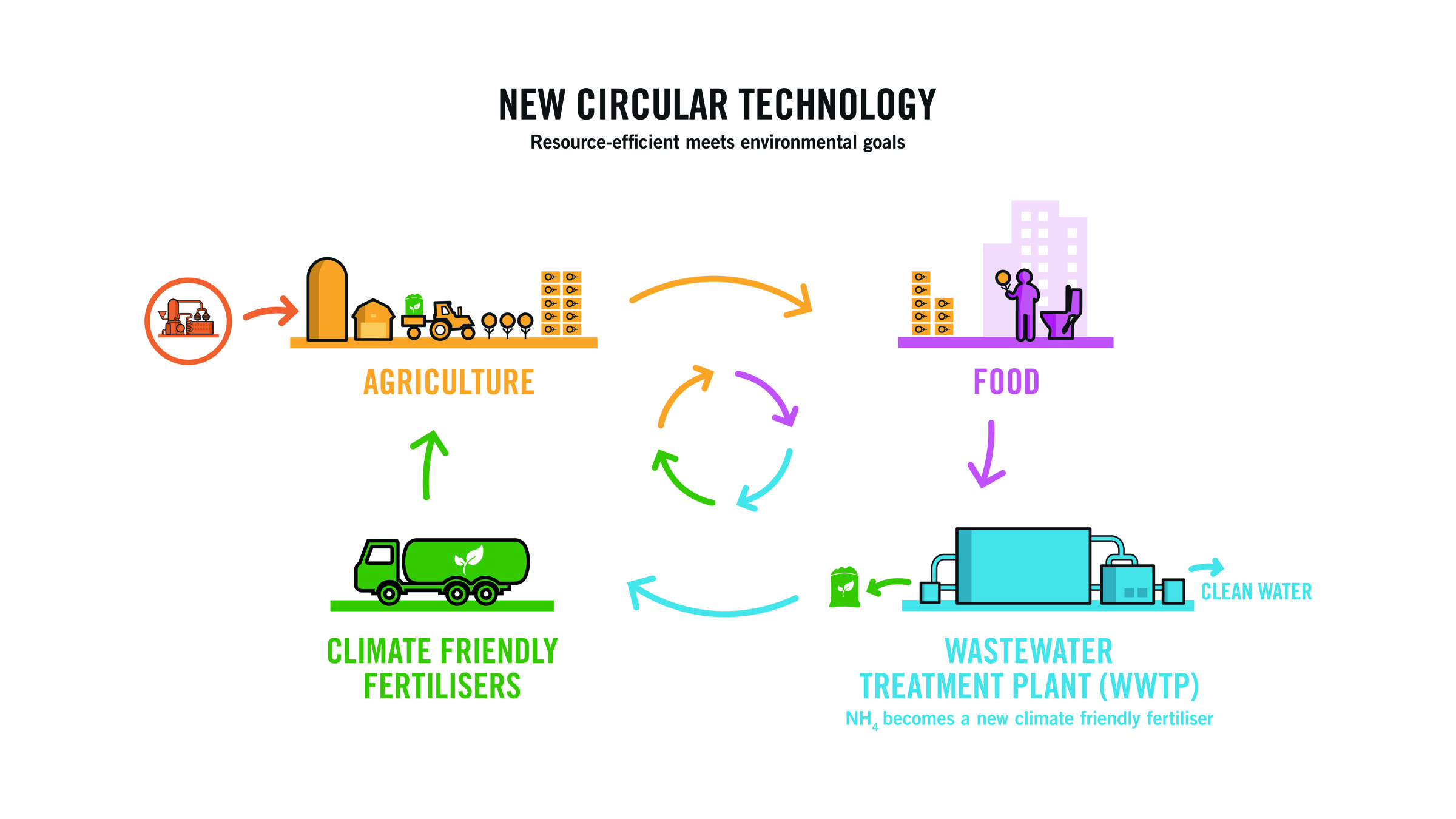EasyMining´s circular nitrogen technology secures 19MSEK
The Swedish environmental company Ragn-Sells, through its innovation company EasyMining, has been granted a 19 MSEK investment from the European Union’s LIFE programme for commercialising its patented method for removing nitrogen from sewage water. The circular solution enables water treatment facilities to capture nitrogen and put it to use as a fertiliser, thereby reducing emissions of greenhouse gas.
28 Aug 2019– We are happy and honored to have the EU invest in our innovation, contributing to making nitrogen removal circular in Sweden and Europe. EasyMining’s technology puts to use the nitrogen compounds we have already produced, and helps to reduce marine eutrophication, says Anna Lundbom, who has headed the LIFE programme application process at the Ragn-Sells Group.

The technology has been developed and patented world-wide by Ragn-Sells’ innovation company EasyMining. Water with a high nitrogen content, for example in municipal sewage treatment facilities, is treated with an agent which crystallises the nitrogen and causes it to precipitate. The nitrogen is then extracted from the crystals and may be used again in agriculture, where nitrogen is one of the key nutrients in commercial fertiliser. This offsets the need to produce virgin nitrogen compounds, thereby reducing the climate footprint of farming.
– When waste-water treatment plants use our method, they reduce their emissions of nitrogen compounds to nearby water, they reduce their climate footprint, and they save tax payer money. They do this by recovering nitrogen, a valuable nutrient, and making a real contribution towards a circular economy, says EasyMining CEO Jan Svärd.
Today’s nitrogen removal methods commonly release the nitrogen back into the air instead of recovering it. These methods typically use bacteria to separate nitrogen from the water, which also causes emissions of nitrous oxide (laughing gas), a powerful greenhouse gas which speeds up climate change 300 times more efficiently than carbon dioxide. The precipitant agent which crystallises the nitrogen in the Ragn-Sells process is neither emitted nor consumed, but continually reused.
The project is a partnership between EasyMining, Denmark’s largest waste-water treatment company BIOFOS, Lantmännen, and Ragn-Sells’ Treatment & Detox business area. In the first phase of the project, the construction of pilot facilities is planned, and in three years, the patent will be ready for full commercialisation. In addition to the use in waste-water treatment facilities, the method will also be used to treat runoff from landfills.
Through the LIFE programme, the European Union is allocating 3.4 billion euros to environmental and climate-related projects between 2014 and 2020.